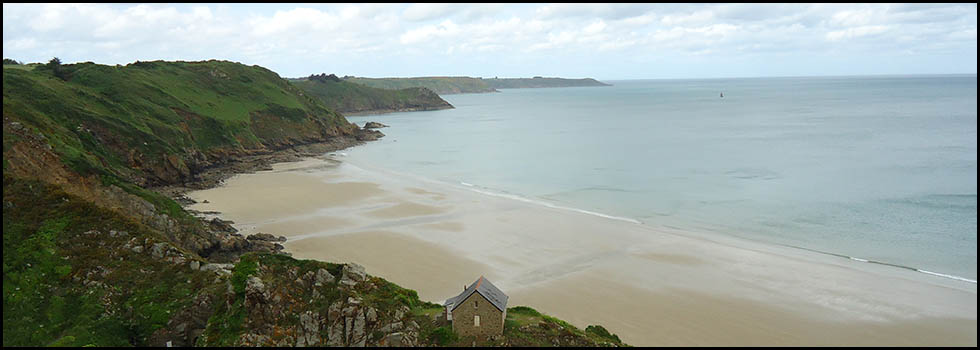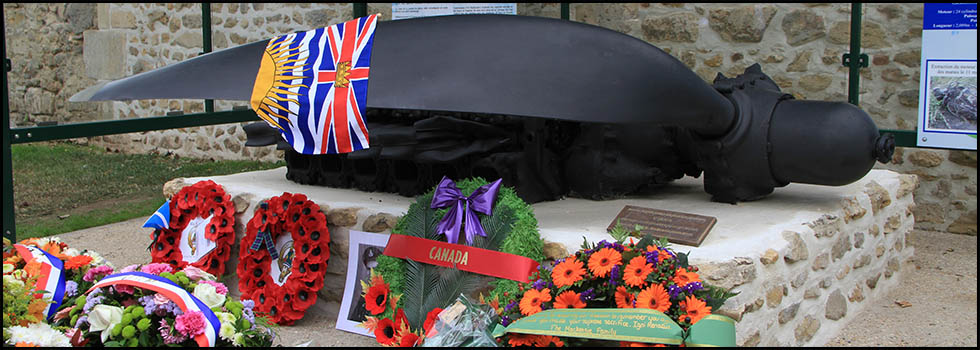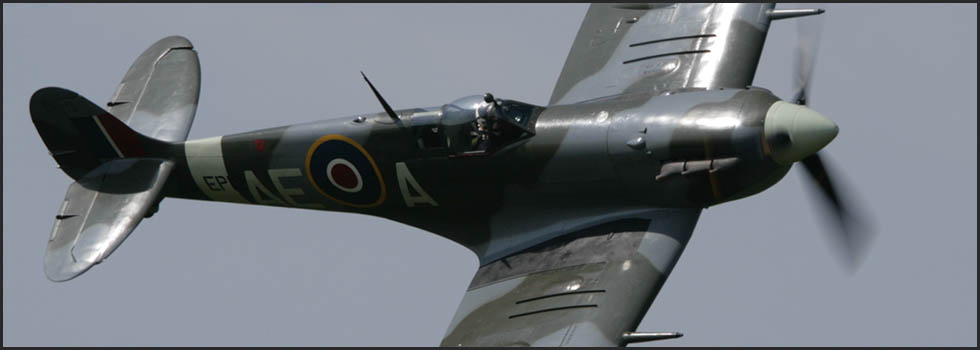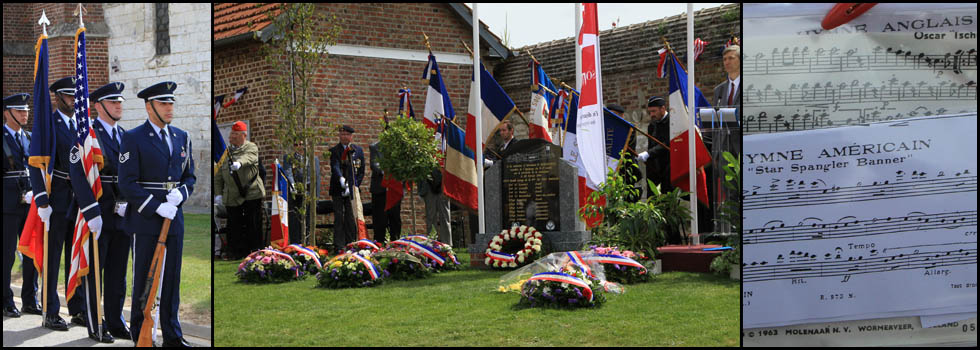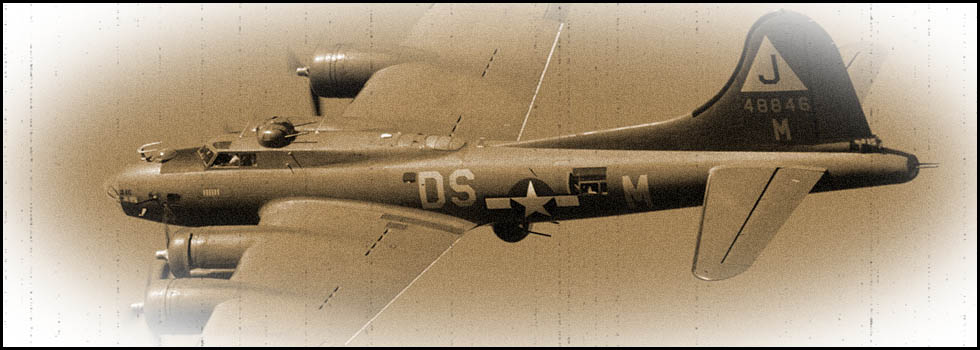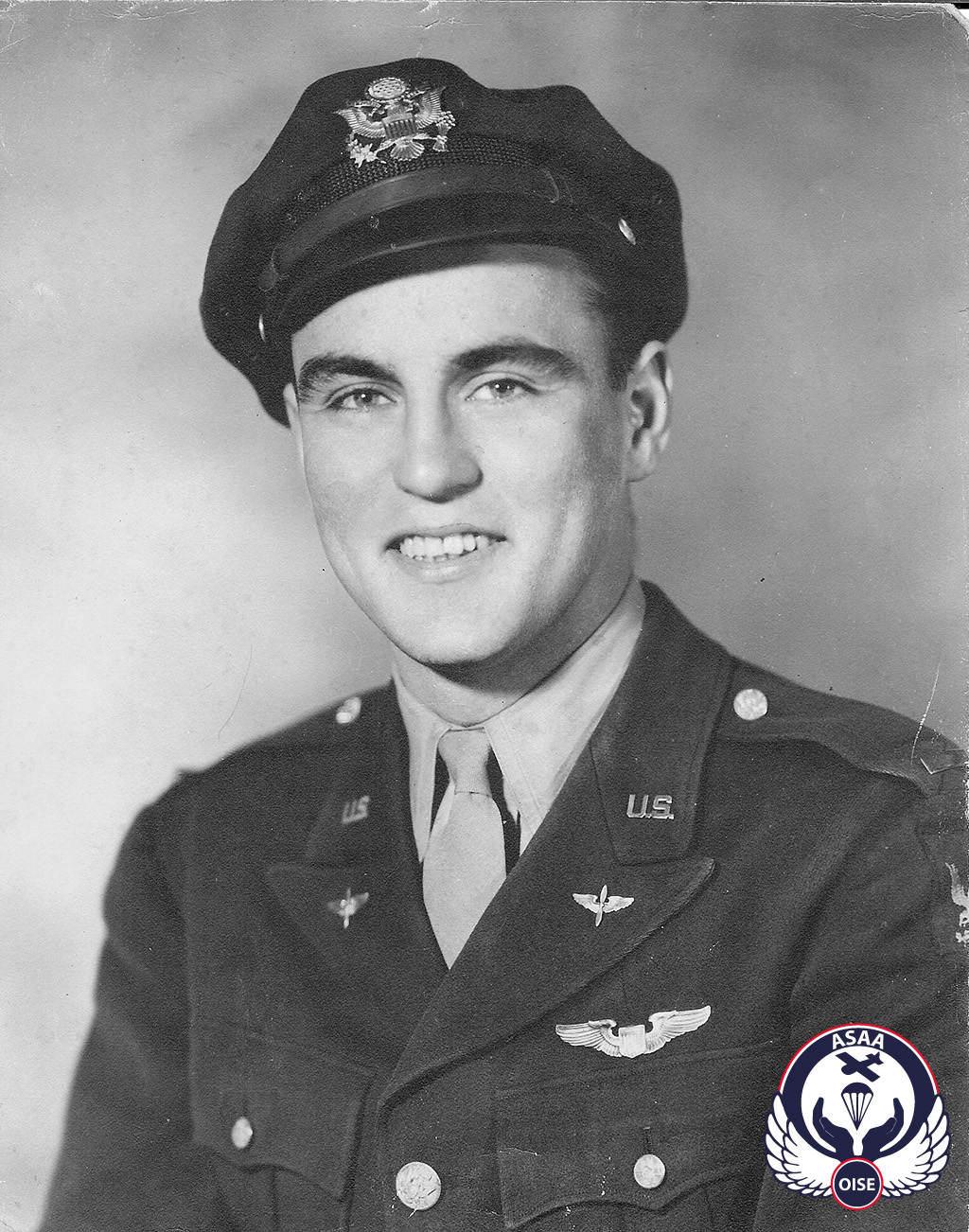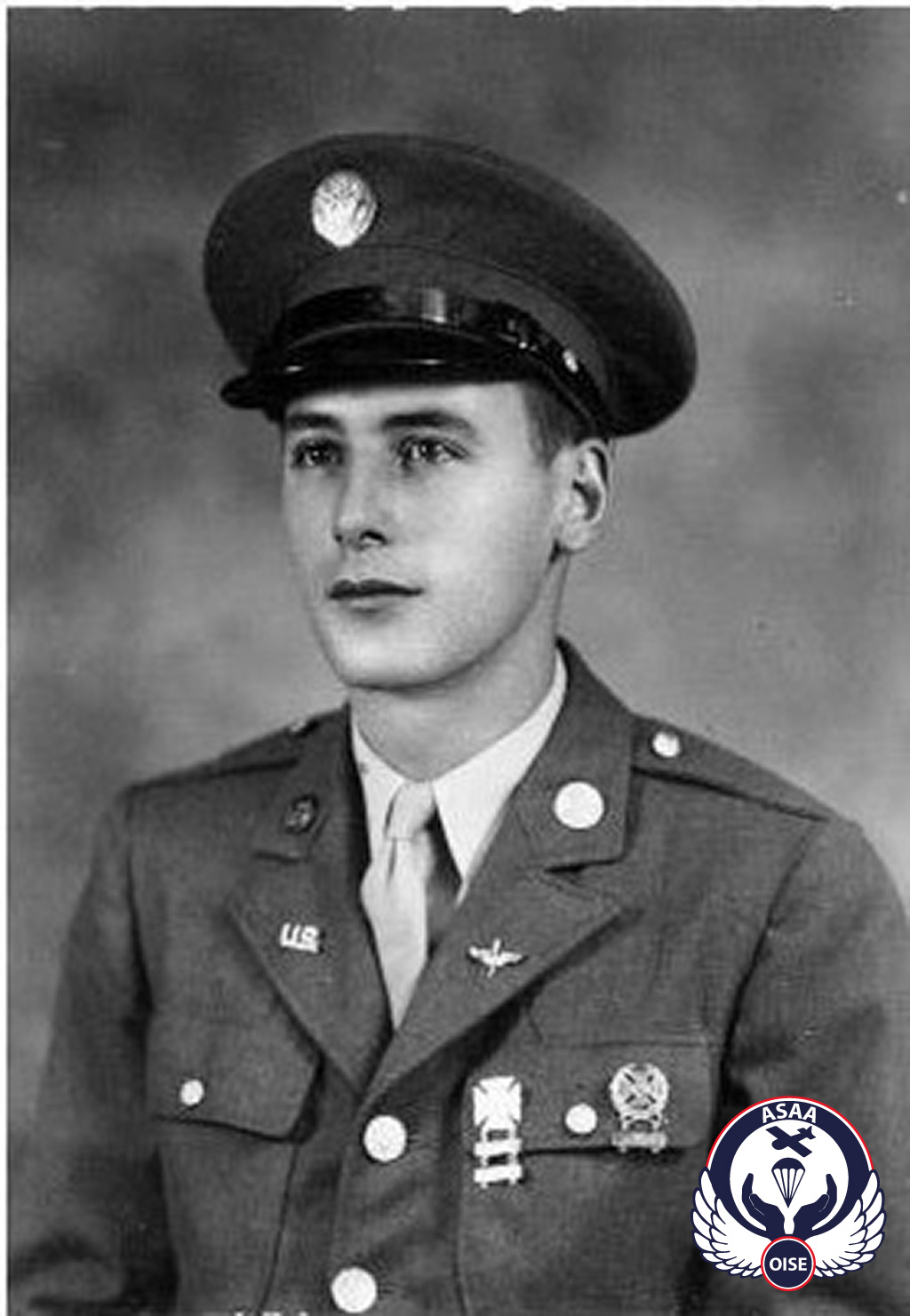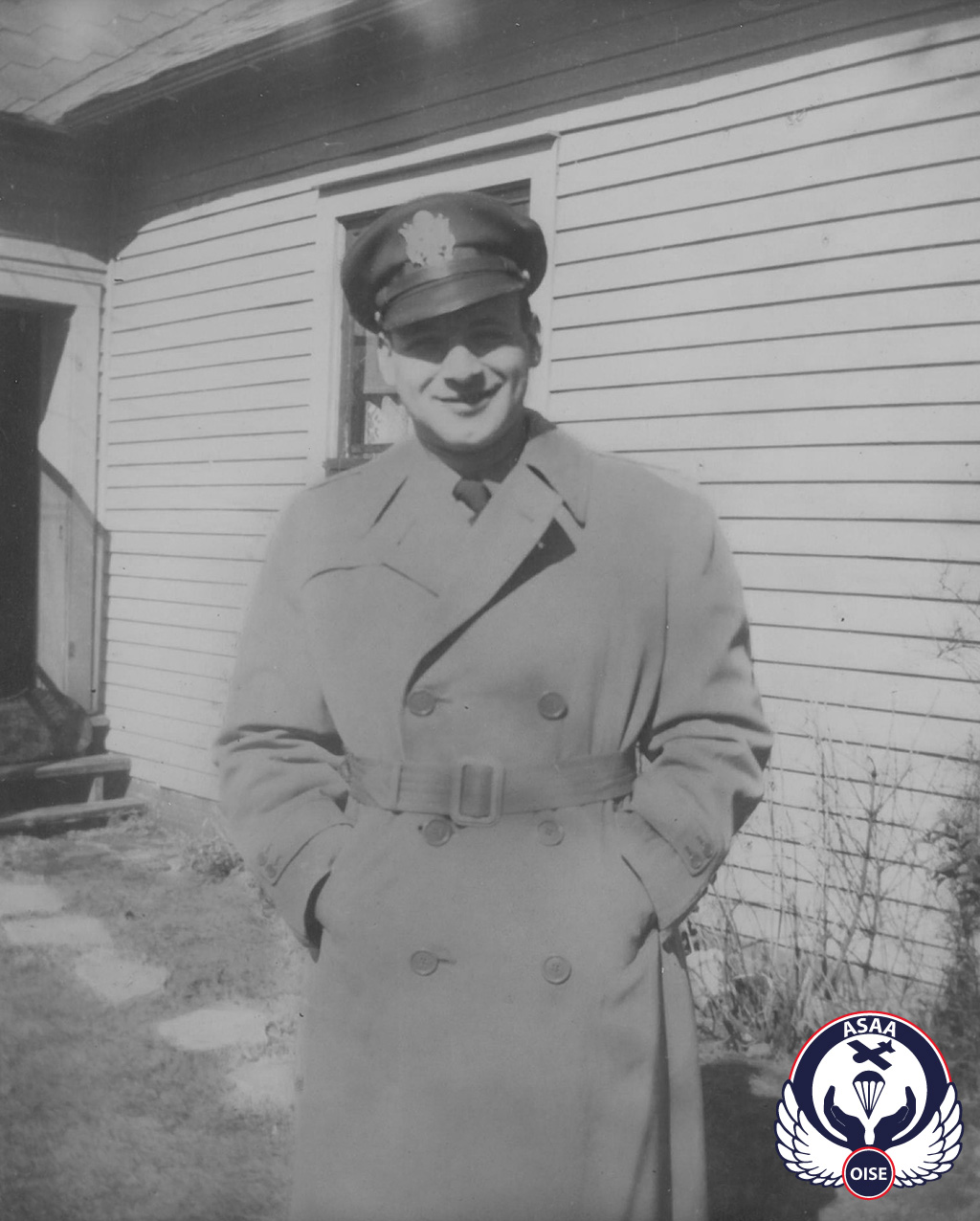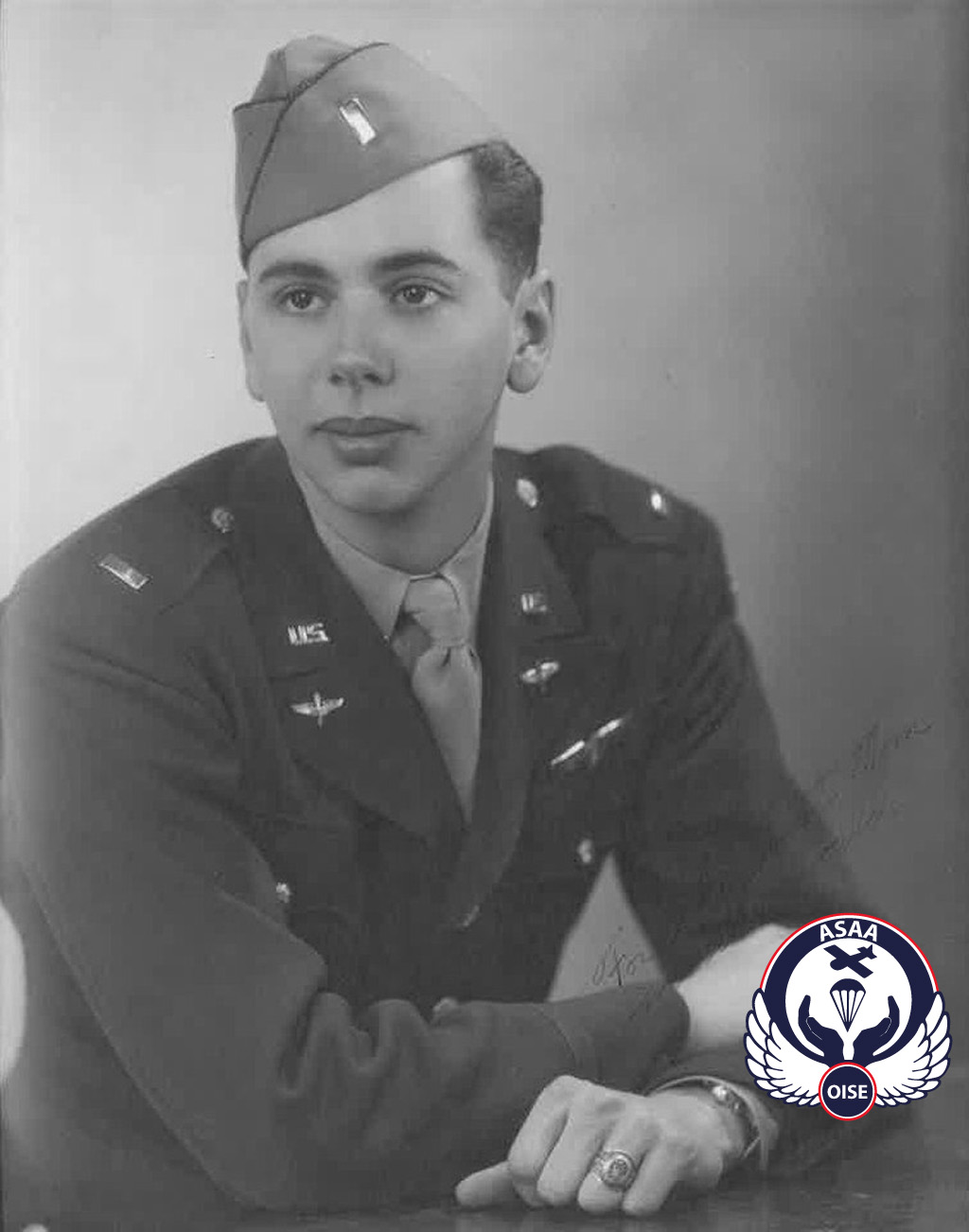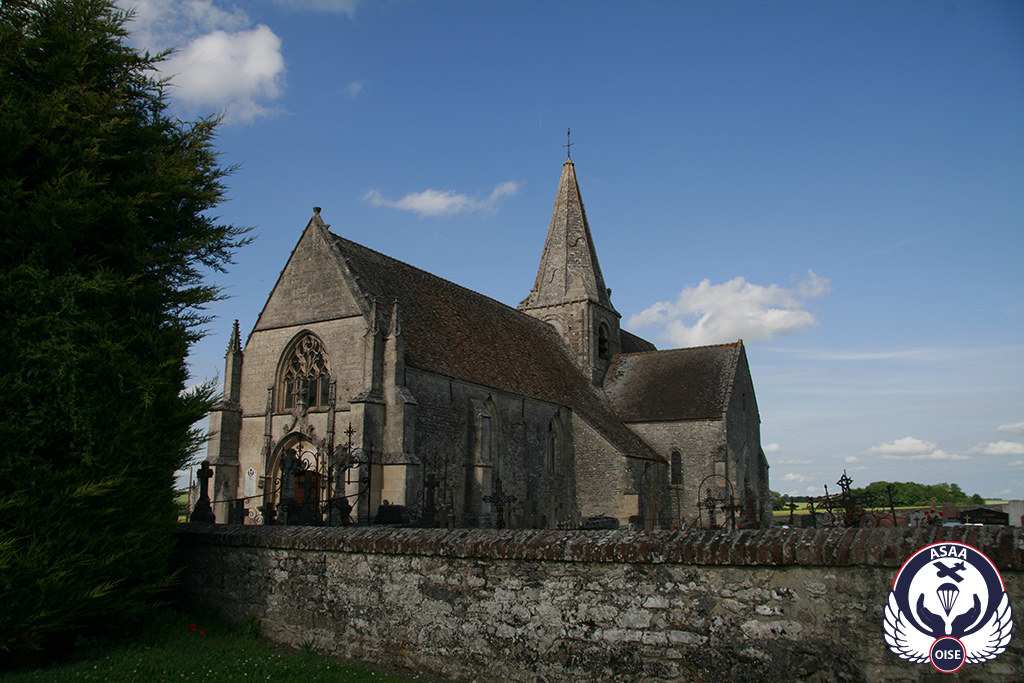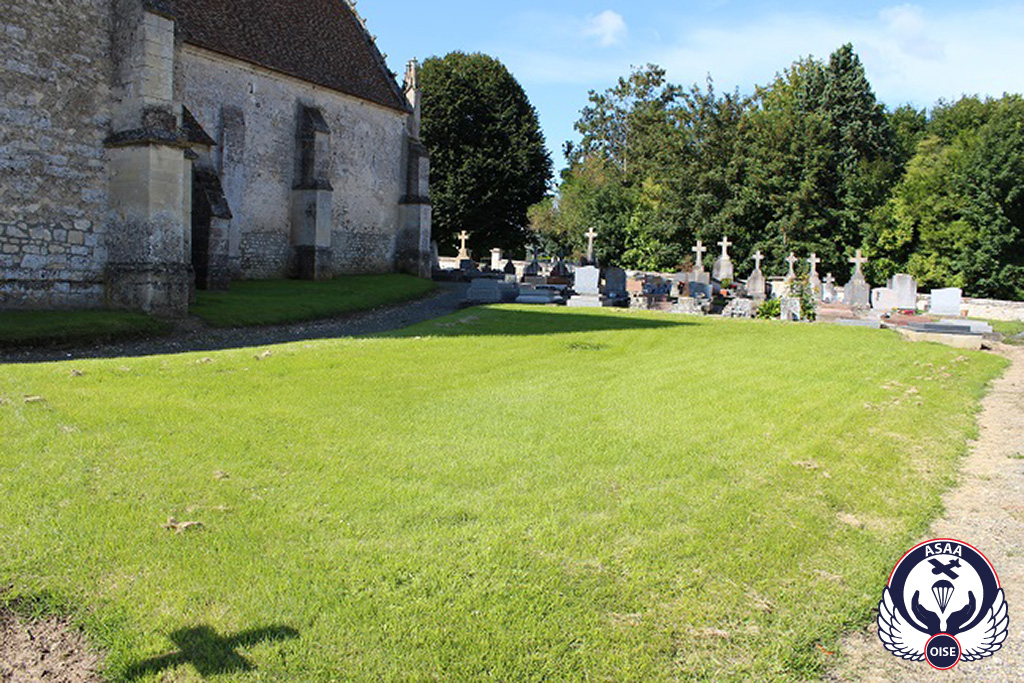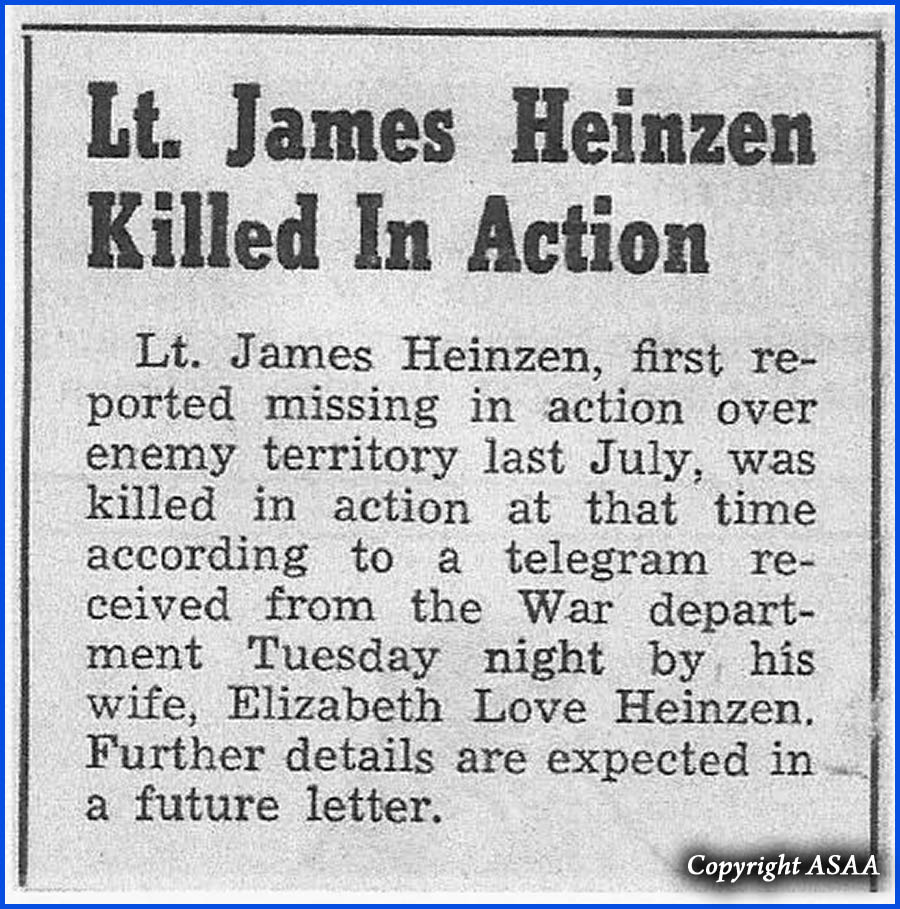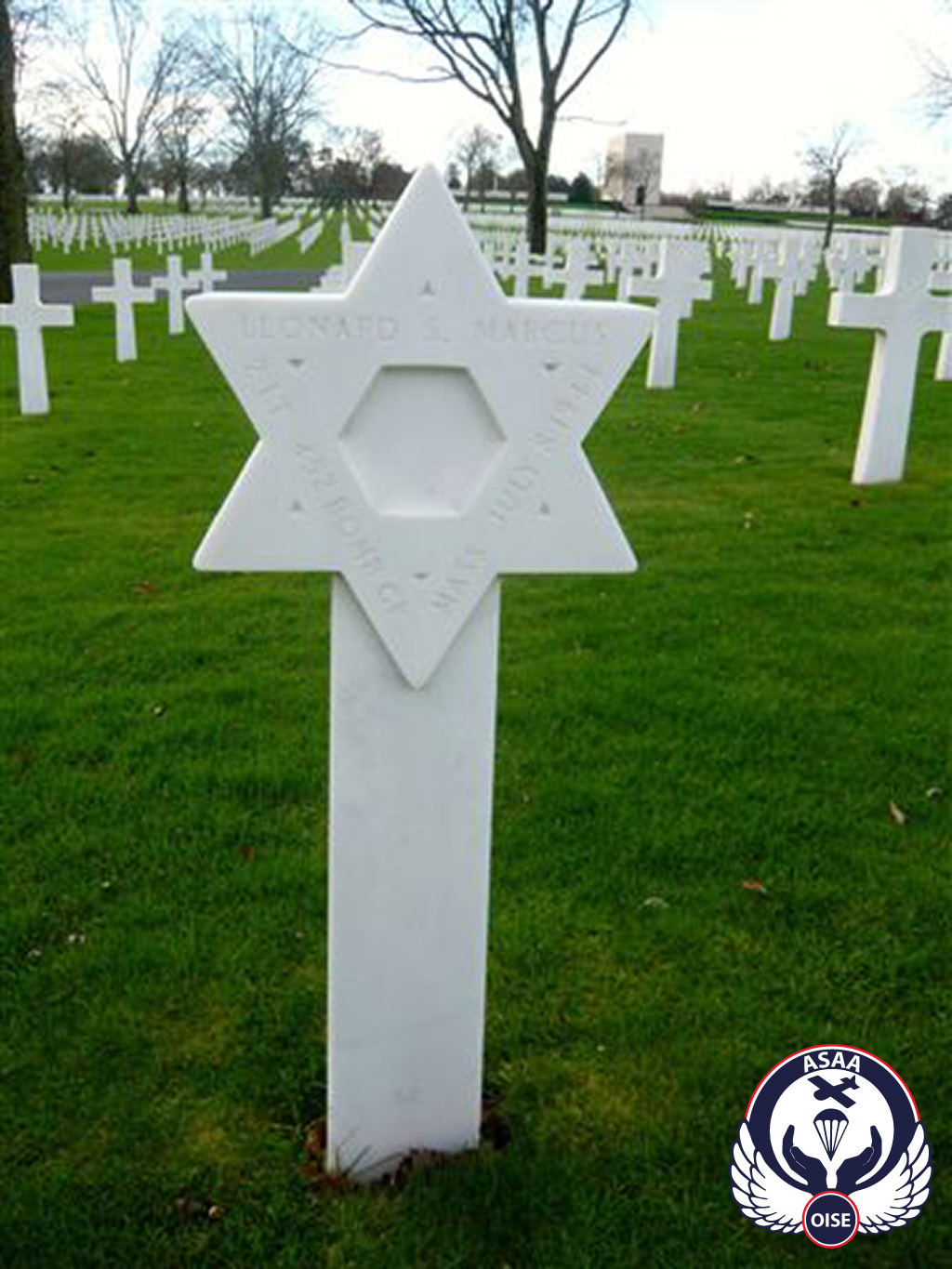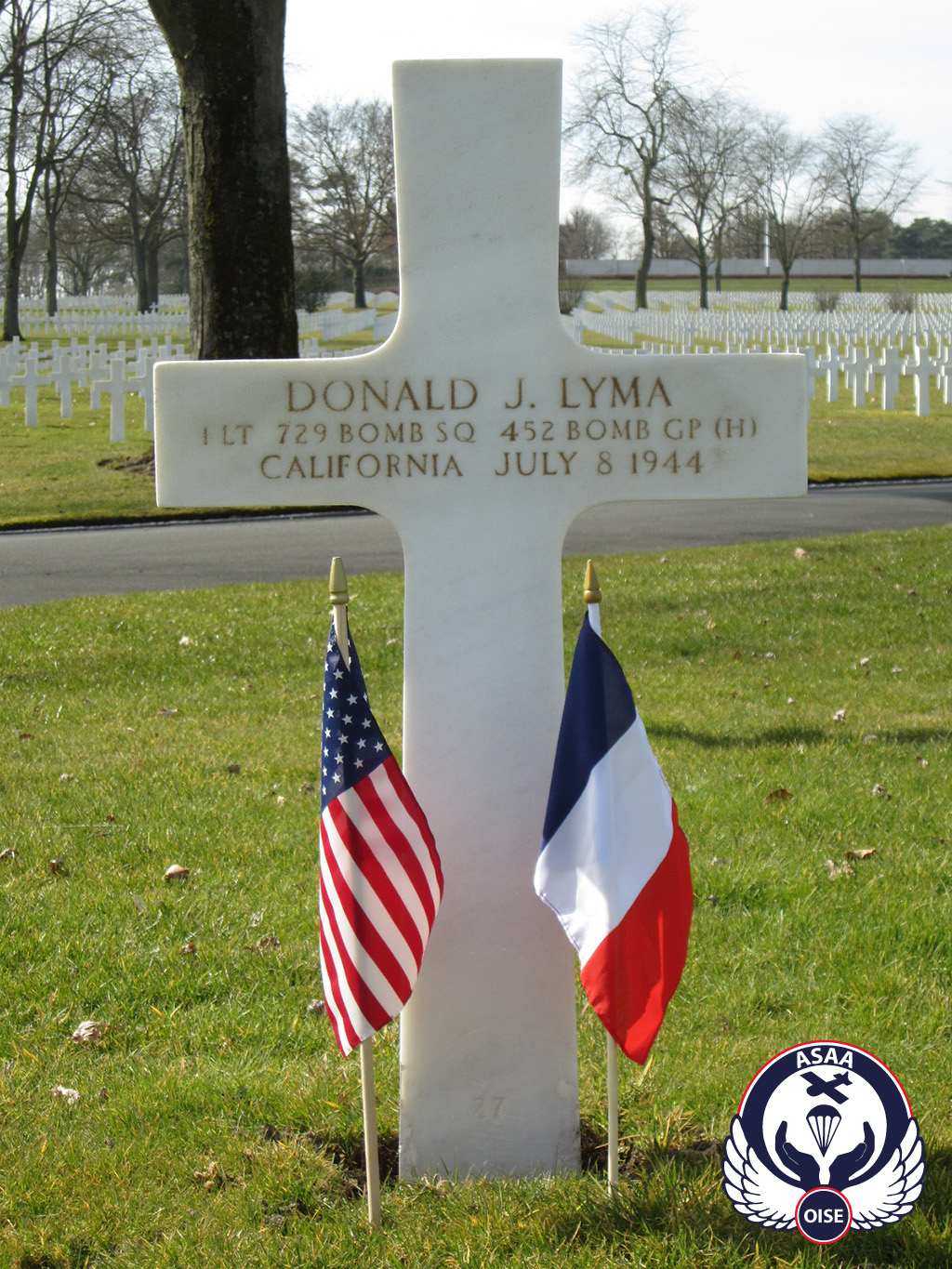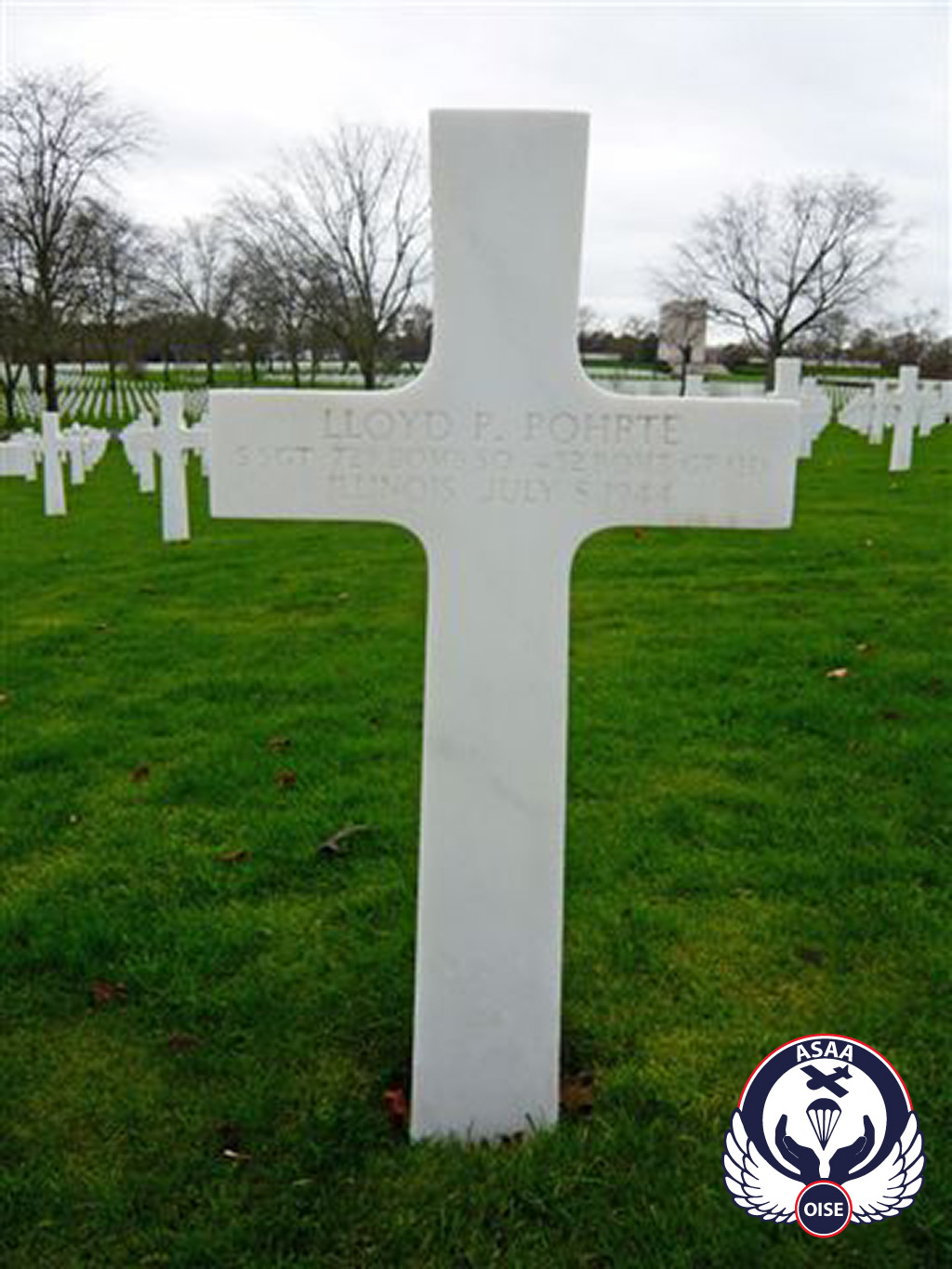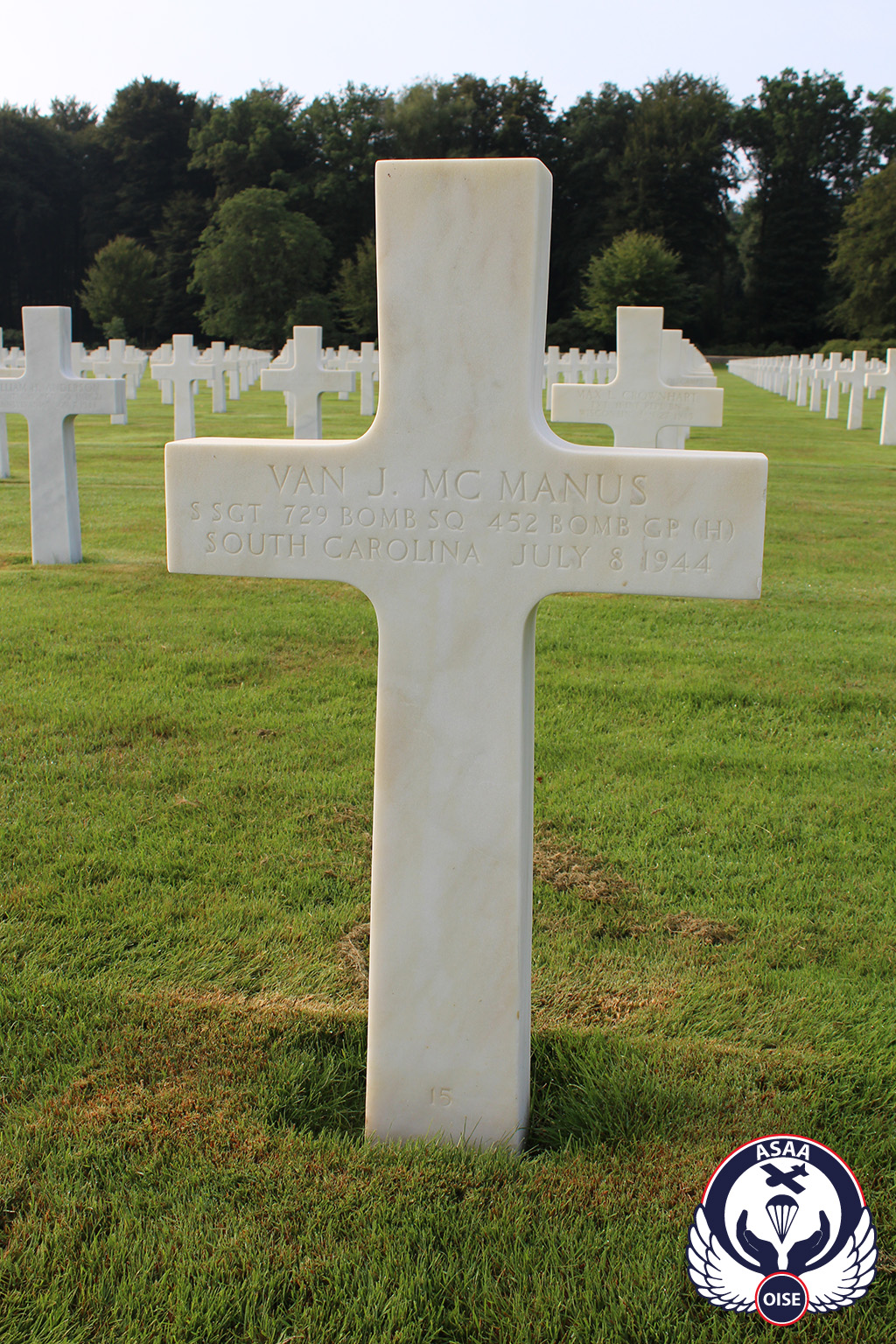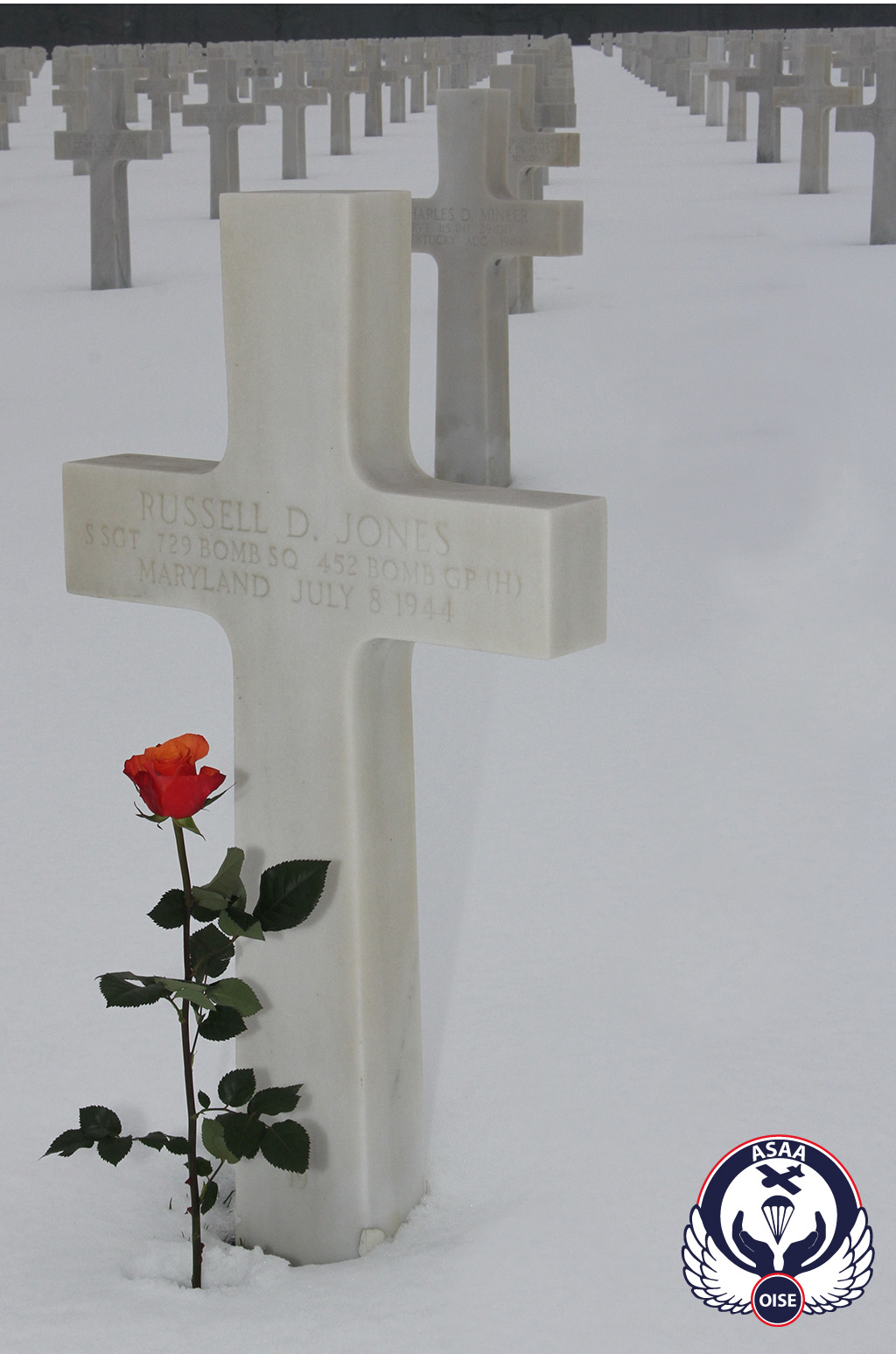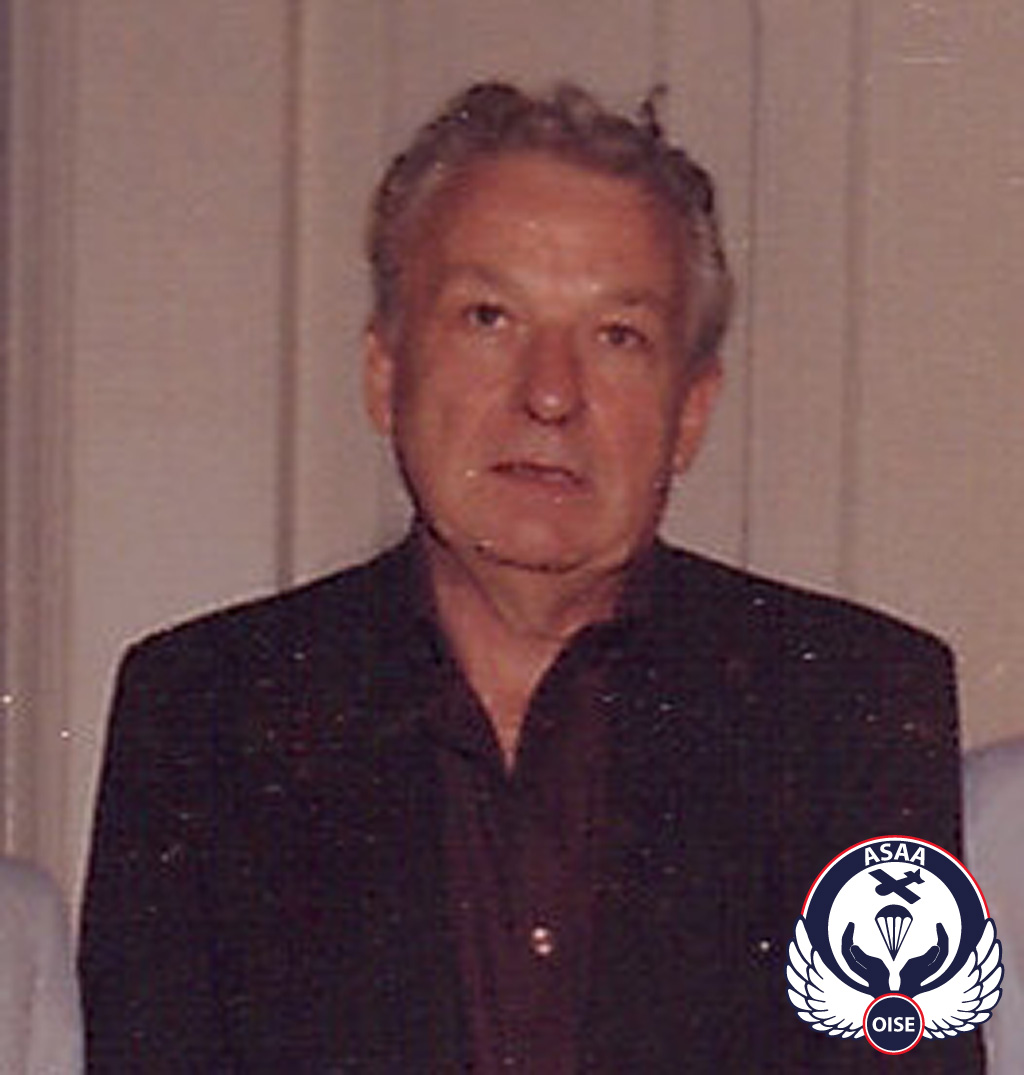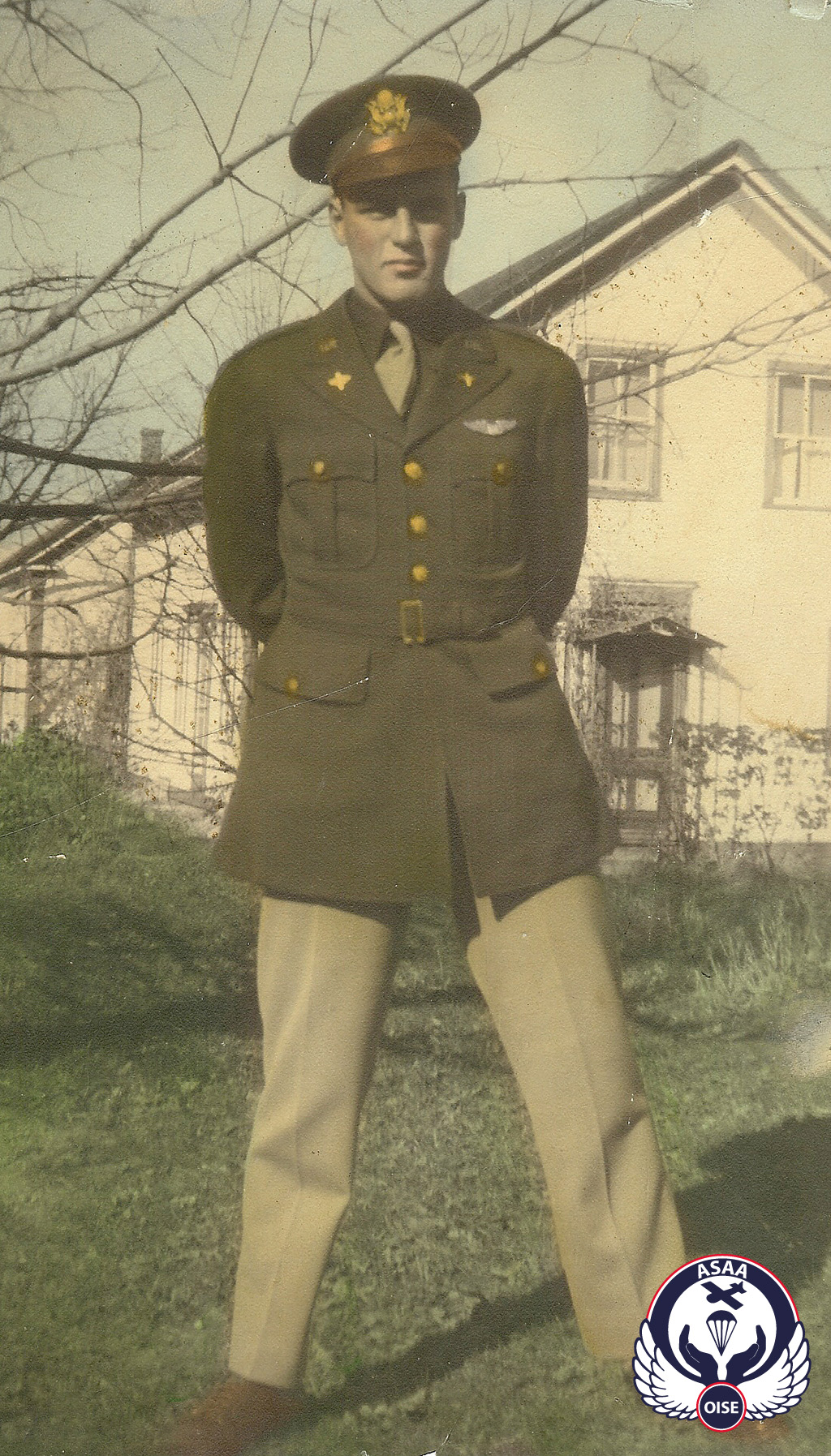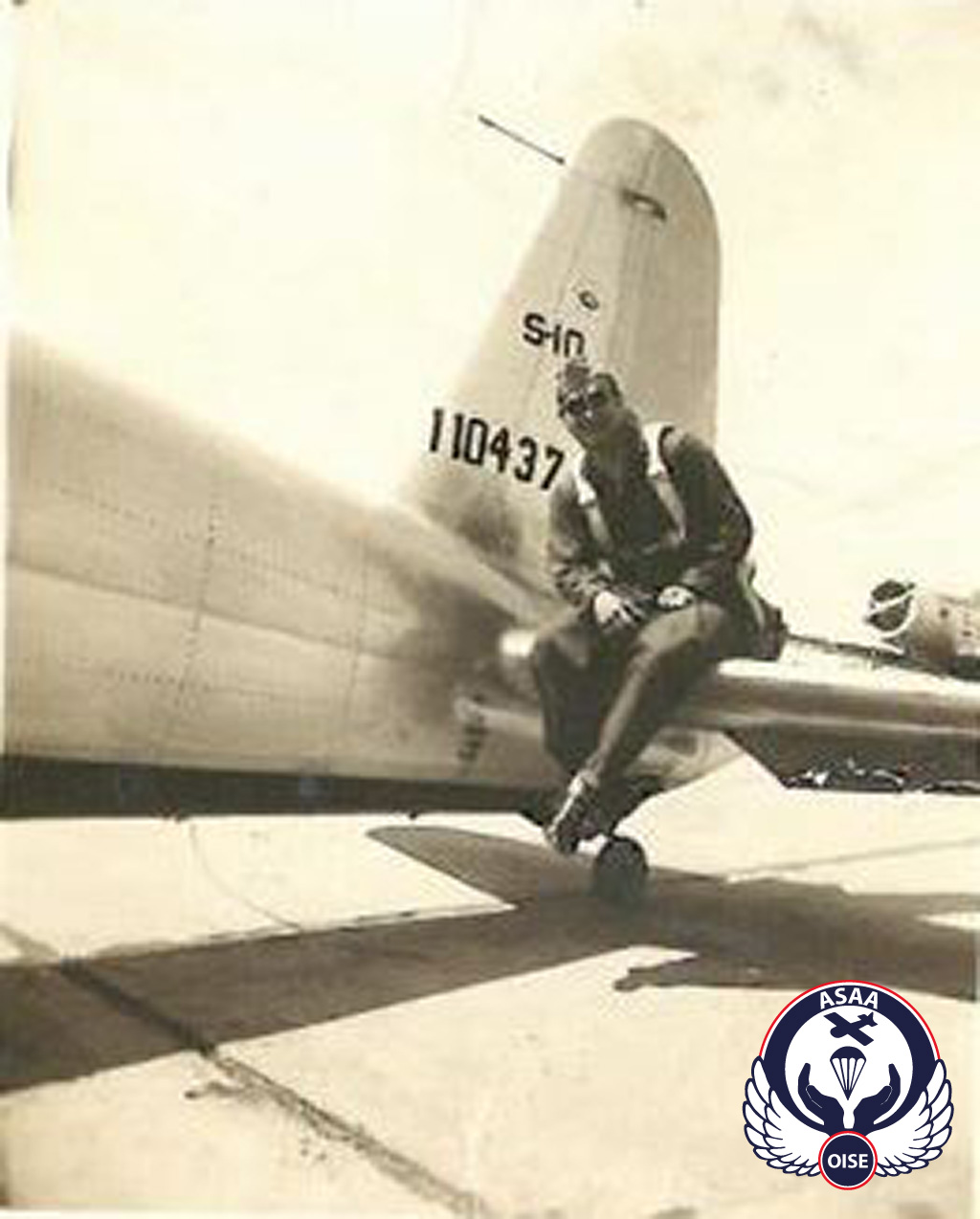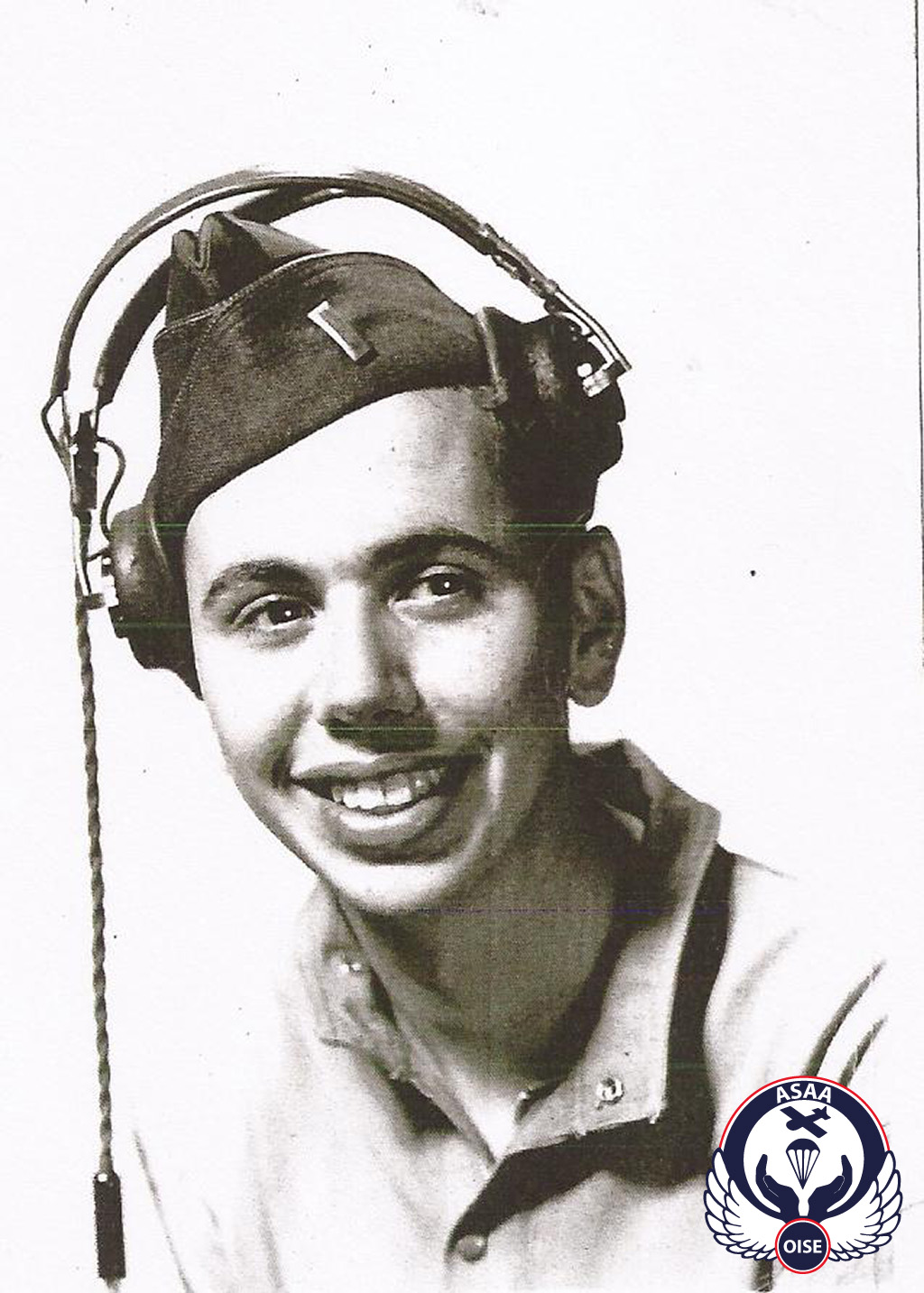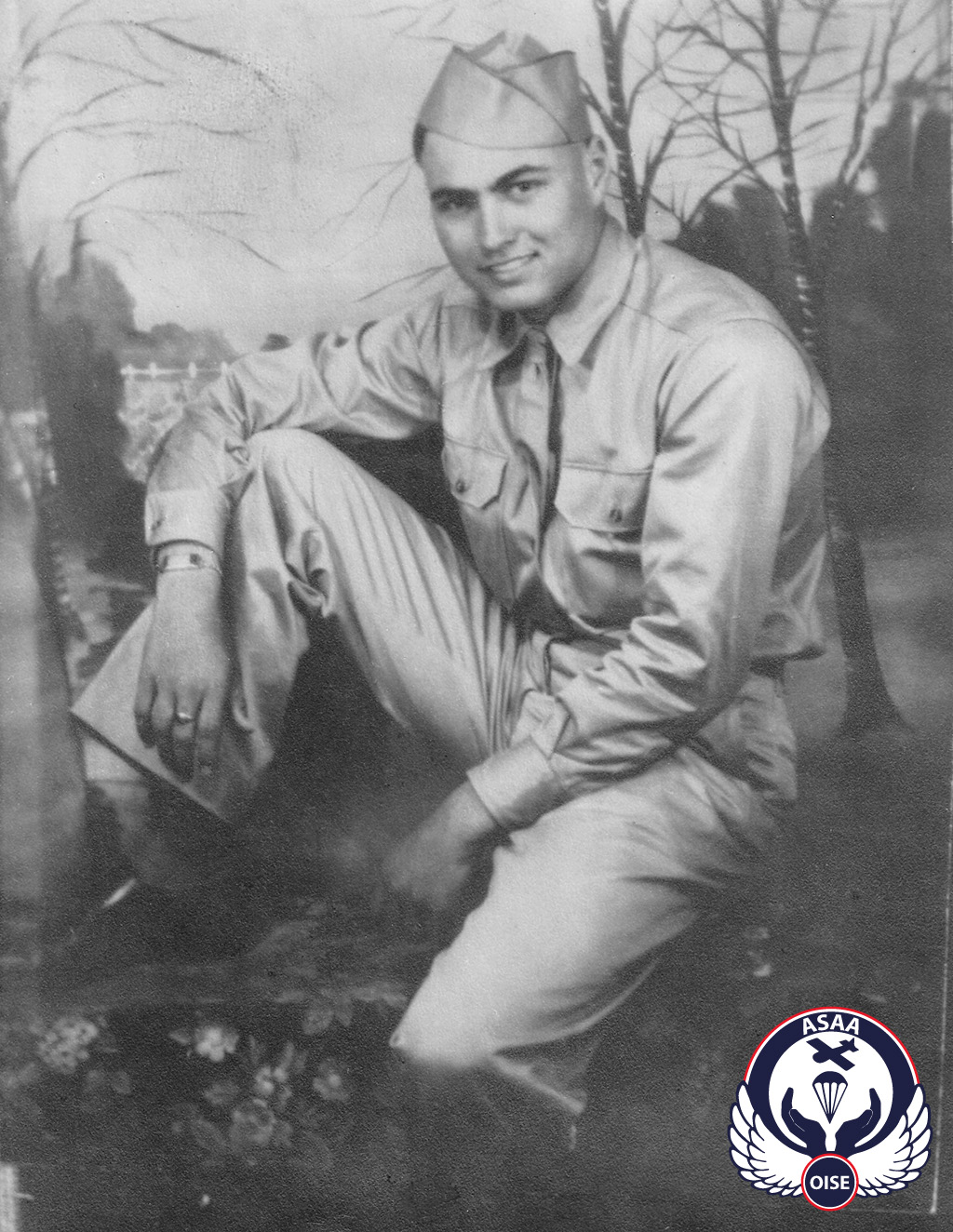8th July 1944
Boeing B-17G #43-37747
452nd Bomb Group
729th Bomb Squadron
8th Air Force
Boubiers (Oise)
En français
The long-awaited Landings of the American and Anglo-Canadian troops took place a month ago in Normandy where the battle was still raging. The city of Caen, located within 20 km of the beaches was still occupied by the enemy. However, in our region, after four years of Occupation, hope for a future Liberation emerged.
Meanwhile, the Allied strategic air offensive continued and intensified every day and every night in the skies of France and Western Europe.
On this 8th July 1944, the primary target defined of the 8th American Bomber Command was the destruction of marshalling yards in Rouen. The Boeing B-17 "Flying Fortresses" of the 452nd Bomb Group, based in Deopham Green, Norfolk, were assigned, among others, to the raid.
Among the crews was the one of the B-17 # 43-37747 :
| 1st Lt. Everett G. HANSON Jr | Pilot | 20 |
KIA | East Blackstone, Massachusetts |
| 2nd Lt. James H. HEINZEN | Co-pilot | 26 | KIA | Wayzata, Minnesota |
| 2nd Lt. Leonard S. MARCUS | Navigator | 26 | KIA | Worcester, Massachusetts |
| 1st Lt. Donald J. LYMA | Bombardier | 19 | KIA | Sacramento, California |
| T/Sgt. George I. GRISSOM | Top turret gunner | 20 | KIA | Hammond, Indiana |
| T/Sgt. Chester L. POOL | Radio-operator | 20 | KIA | Oklahoma City, Oklahoma |
| S/Sgt. Lloyd P. POHRTE | Ball turret gunner | 19 | KIA | Berwyn, Illinois |
| S/Sgt. Russell D. JONES | Right waist gunner | 21 | KIA | Baltimore, Maryland |
| S/Sgt. Arthur SCHULZE | Left waist gunner | 25 | POW | Chicago, Illinois |
| S/Sgt. Van J. McMANUS | Tail gunner | 19 | KIA | York, South Carolina |
1st Lt. Everett G. HANSON Jr 2nd Lt. James H. HEINZEN 2nd Lt. Leonard S. MARCUS 1st Lt. Donald J. LYMA
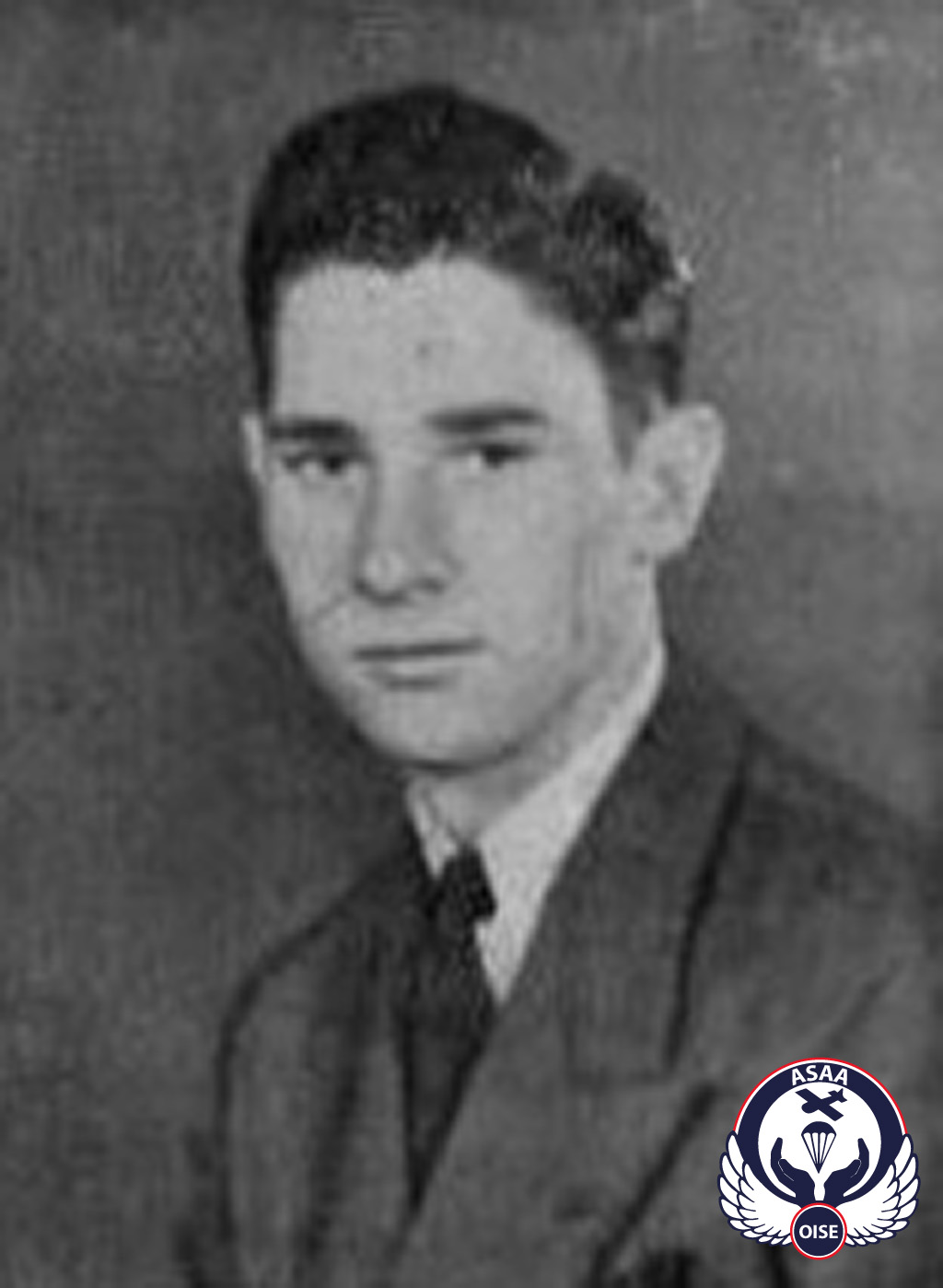
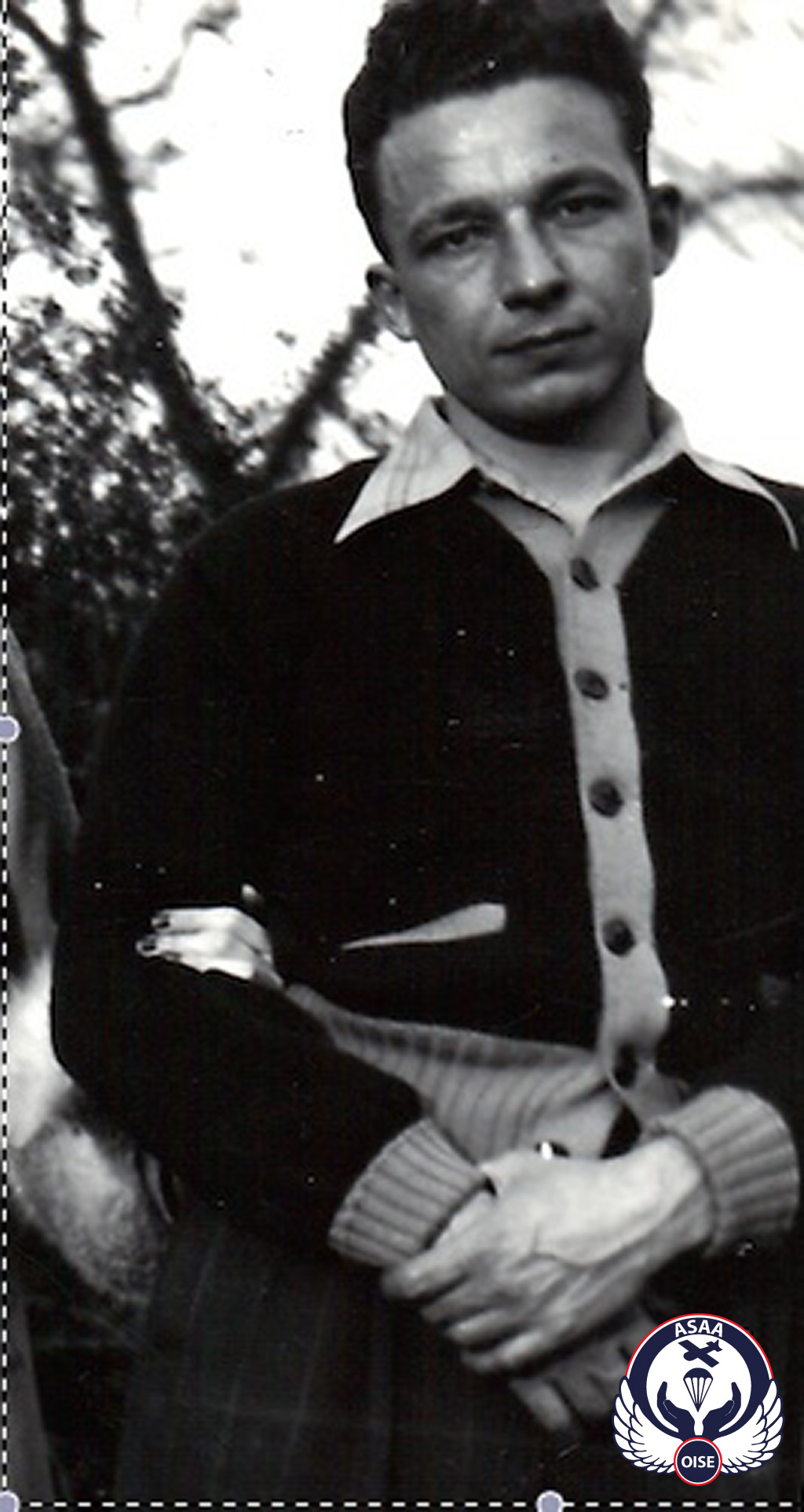
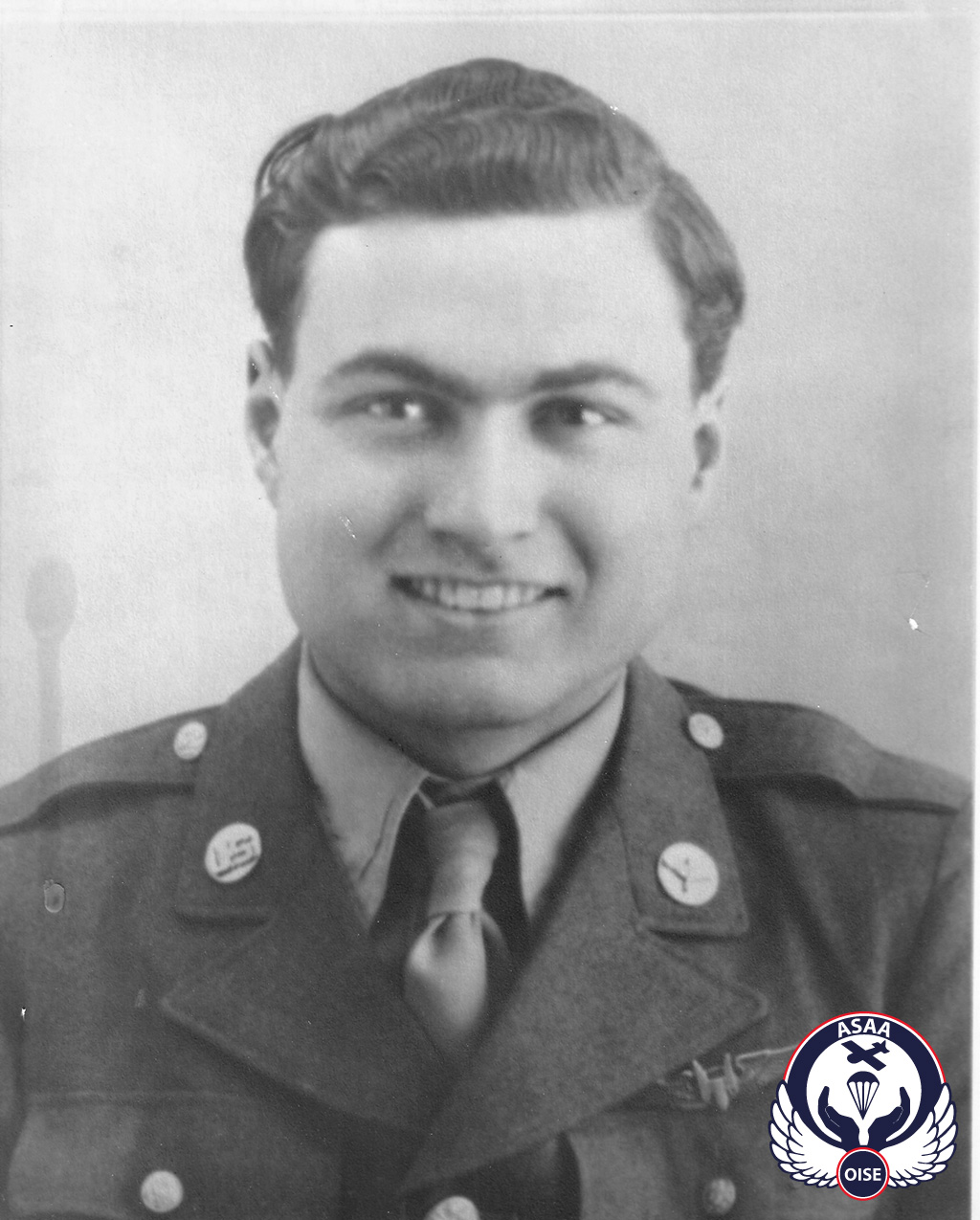
S/Sgt. Russell D. JONES S/Sgt. Arthur SCHULZE S/Sgt. Van J. McMANUS
At the controls of the aircraft was 1st Lt. Everett G. Hanson, an experienced pilot despite his young age. He was on his 32nd mission, as were most of his crew.
Stationed in England since May, this crew was very experienced and bonded. Between them was a strong sense of confidence.
This 8th July was a special day for 1st Lt. Hanson : it was his twentieth birthday. If the mission was going well, he will celebrate in the mess Squadron with his crew after returning to base. After that for them there remained only three missions to accomplish before finally being able to return home and meet their loved ones again.
The bomber formations now flew over the English Channel. The weather deteriorated. Cloud layers required the aircraft to lose altitude causing some disruption within the formations.
Upon crossing the French coast, Flak, the German antiaircraft defense, opened up, trying to shoot down the aircraft which were lining up for the final bombing run.
There was no question of deviating from the course. Despite high caliber shells of Flak bursting around and hitting the aircraft, the course had to be maintained, straight to the target.
Arriving over the target at high altitude, it was hidden by clouds. Bombing was impossible.
Some aircraft, including the one piloted by 1st Lt. Hanson, then set course southeast towards Mantes-la-Jolie. This was one of the secondary targets to bomb as was defined at the briefing.
The bridges over the River Seine and the railway installations of the town were potential targets. At all costs the enemy had to be prevented to send reinforcements to the Normandy front.
A few kilometers further North, underground quarries of Nucourt, known to house stocks of V1 Flying bombs, were also a target to destroy. Since mid-June, these secret weapons, with high destructive power, were hitting the London area where they spread terror.
These areas of Mantes-la-Jolie and Nucourt were highly protected by a belt of anti-aircraft guns which opened fire on the approaching bombers. All hell broke loose again.
According to other pilots of the Bomb Group, the B-17 flown by 1st Lt. Hanson was hit hard by a direct hit from anti-aircraft artillery in the Nucourt area. The aircraft was literally broken into two parts, resulting in the immediate death of nine of its ten crew members.
Miraculously, only S/Sgt. Arthur Schulze managed to evacuate the aircraft. Parachuting down, he landed near the Boissy-le-Bois German airfield where the fearsome fighters of the JG 26 were stationed. S/Sgt. Schulze was quickly captured and sent subsequently to Stalag Luft IV, Pomerania, until the end of the war.
The Flying Fortress, completely disabled and partially in flames, crashed near the village of Boubiers.
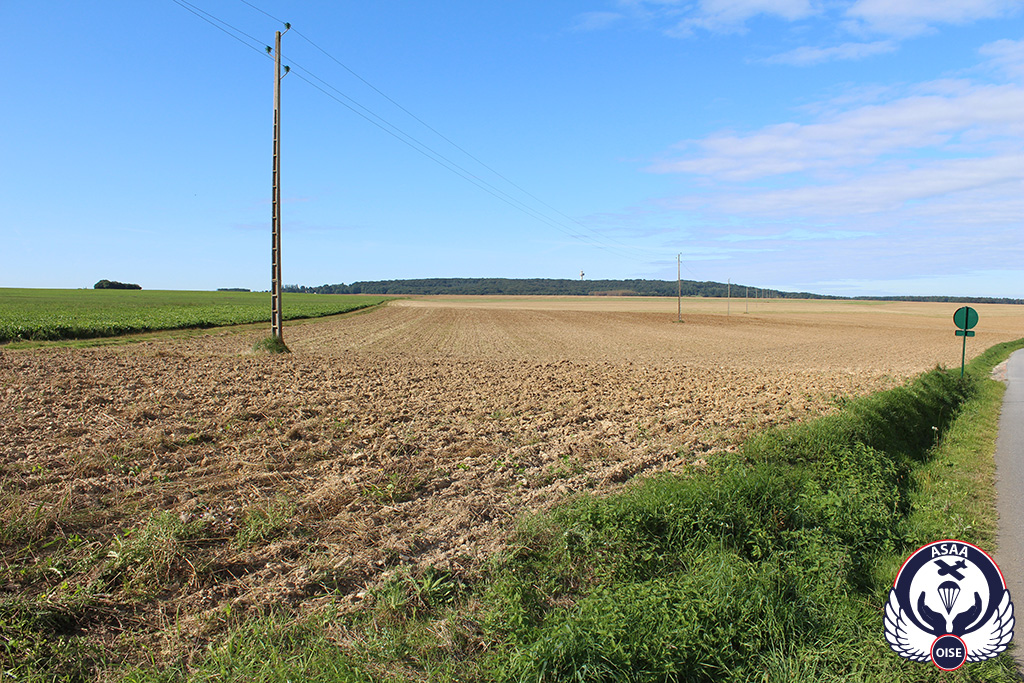
The bodies of the nine airmen were removed from the wreckage. Some of them were identified by their dogtags. S/Sgt. Jones was identified by a chain on his left arm with the inscription "Hands off, this guy is mine - Sara" followed by his name and his Service Number.
Two days later, on 10th July, the population attended with a deep sense of respect the burial of the nine airmen in the cemetery of the village. They rested there until the end of the war.
The church and the location where the nine airmen were buried until the end of the war.
Meanwhile, in the United States, the parents and the wives of the airmen were still unaware of the tragedy but the worrying and anxiety grew as the days passed. They received no news.
At the end of July, each family received the dreaded telegram sent by the Air Command. It told them that their son or husband was missing in action since 8th July without more information. A small hope remained nonetheless. All families clung to the idea that they may have been rescued by the population and they were on their way to escaping ...
This hope was totally wiped out several months later. It was during the month of April 1945 that a new telegram notified them officially the death in action of the nine airmen.
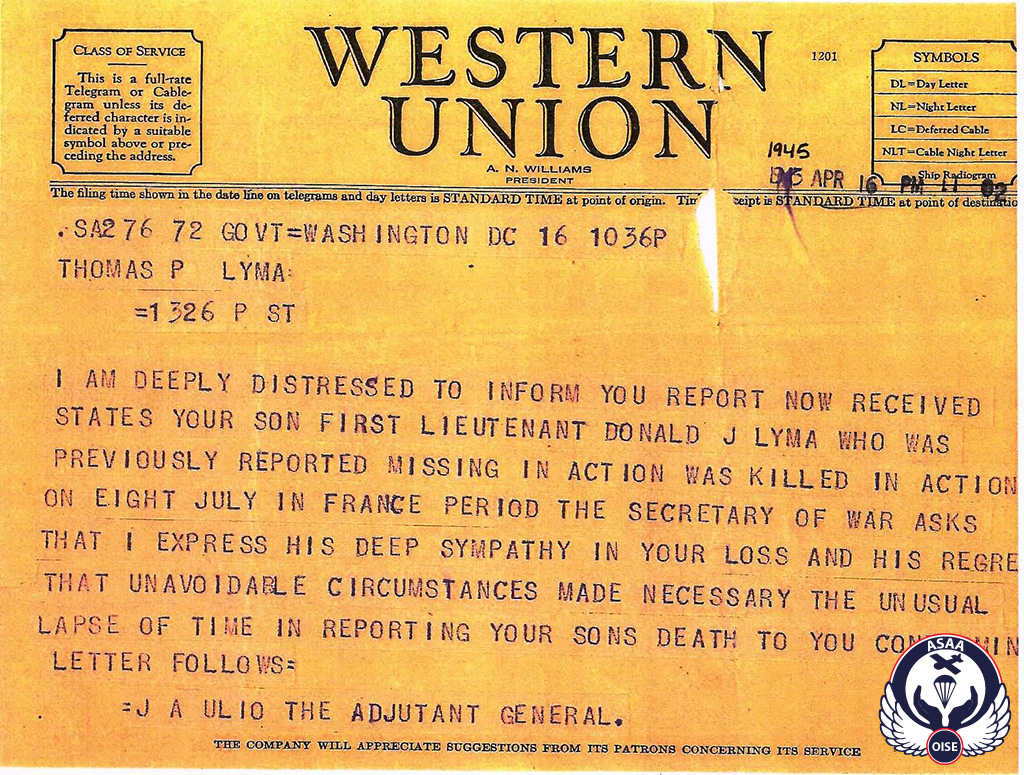

The tragic telegram announcing to his parents that 1st Lt. Donald J. Lyma had been killed in action.
By the Red Cross, the Schulze family learned that their son was now a prisoner of war.
The US Army liberated the area on 30th August.
The bodies of the nine airmen were exhumed and formally identified in the following months by the American Graves Commission. They were then transferred into temporary military cemeteries, including Solers, in Seine-et-Marne, for 1st Lt. Lyma and S/Sgt. McManus.
At the request of their families, the bodies of Lts. Hanson and Heinzen and T/Sgts. Grissom and Pool were repatriated to the United States.
S/Sgt. McManus rests in the Epinal American Cemetery, France, and S/Sgt. Jones in the Ardennes American Cemetery, Belgium.
During his captivity, Arthur Schulze suffered greatly, like many others, of deprivation but also of the terrible cold of the winter of 1944-1945. After several attempts, he managed to escape in the spring of 1945 and joined the British troops who were advancing. He remained all his life marked by the terrible tragedy of 8th July 1944.
He died on 20th January 2009, at the age of 89.
Arthur Schulze after WWII
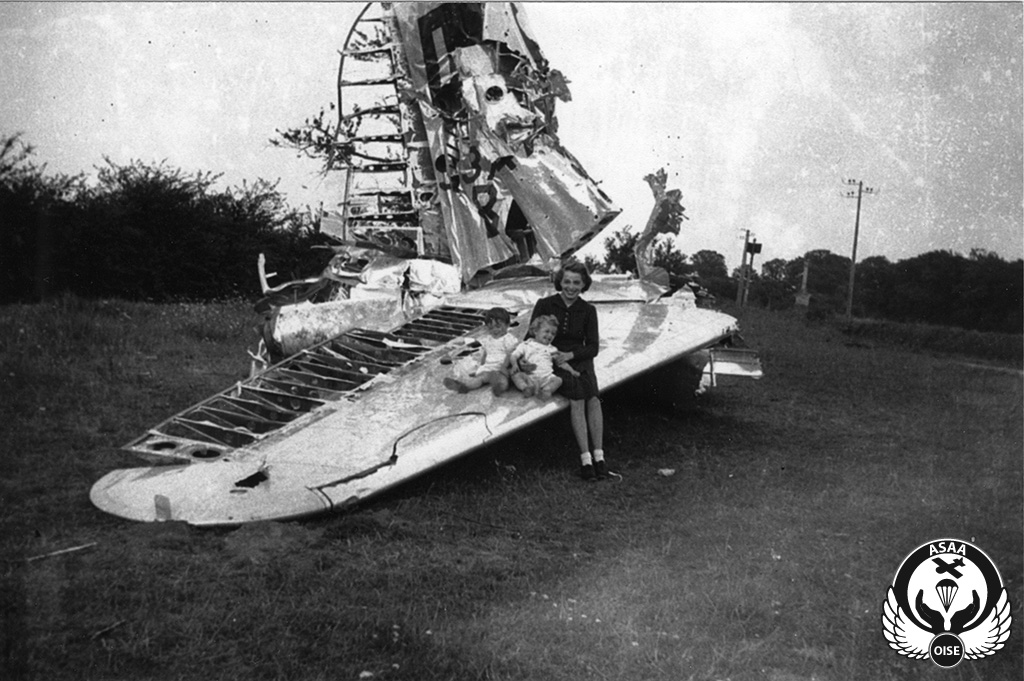
1st Lt. Everett G. Hanson Jr in 1943 2nd Lt. Leonard S. Marcus - San Marcos AFB, Texas,
in 1943.
1st Lt. Donald J. Lyma - S/Sgt. Van J. McManus
Victorville AFB, California
in October 1943
On 8th May 2015, a ceremony was held at Boubiers (Oise) in memory of the crew.
Source : US Archives, families of the crew members and municipality of Boubiers.
With special thanks to Mrs Janice Kidwell

